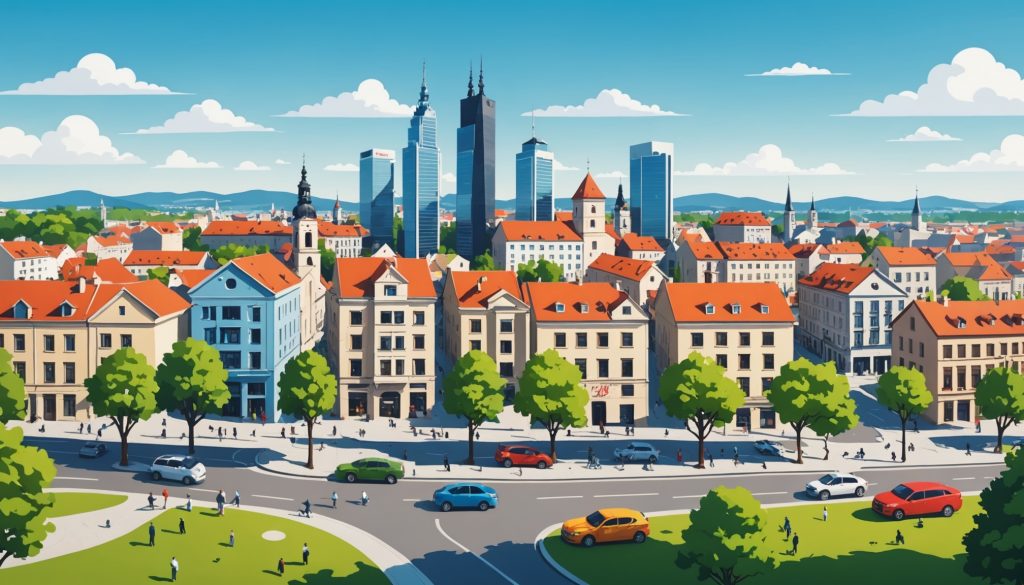Real Estate Investment Opportunities in Serbia: A Comprehensive Guide for 2025
Estimated Reading Time: 7 minutes
Key Takeaways
- Serbia’s real estate market is stabilizing, creating moderate investment opportunities.
- Expected GDP growth of 4% by 2025 increases housing demand.
- Belgrade remains a prime location for both residential and commercial investments.
- Investment returns average 9-12% annually based on current trends.
- Foreign investors benefit from relatively secure property rights and manageable tax terms.
Table of Contents
- Market Overview
- Investment Trends & ROI Projections
- Legal & Tax Considerations
- Property Types & Prices
- Risks & Challenges
- Financing & Mortgage Options
- Citizenship/Residency Benefits
- Key Takeaways
- FAQ
- Conclusion
Market Overview
Serbia’s real estate sector has shown resilience amidst economic fluctuations. The country’s GDP is projected to grow by 4% by 2025, an increase from 2.5% in 2023. This economic momentum creates a favorable landscape for real estate investment characterized by:
- Increasing employment rates contributing to enhanced housing demand.
- A significant influx of foreign direct investment, totaling $4.5 billion in 2023.
- Government policies fostering housing infrastructure development, encouraging construction and renovations.
- Improved access to mortgage financing which augments buyer confidence and market liquidity.
Recent trends suggest that price surges experienced due to international migration are stabilizing, leading to potentially sustainable growth trajectories.
Investment Trends & ROI Projections
Price Trends and Yields
- Belgrade’s residential market grew by 6% in 2024, averaging €2,623 per square meter.
- Properties value increased by 20-30% over the past four years, with new developments priced between:
- €1,600 per m² in suburban regions
- €2,500 per m² in premium areas
- Expected seasonal fluctuations indicate a mature market, beneficial for long-term investment strategies.
Potential Returns
- Annual capital appreciation is projected to be 5-7% in key metropolitan areas.
- Rental yields range from 4-5% in Belgrade to 5-6% in secondary cities.
- Well-selected properties may yield a total ROI of 9-12% annually.
Legal & Tax Considerations
Foreign investors can navigate the property acquisition process in Serbia, which is relatively direct albeit somewhat bureaucratic. Key legal considerations include:
- Secure property ownership rights for foreigners, with some restrictions on agricultural land.
- Transaction costs include a 2.5% property transfer tax, notary fees, and agency commissions (typically 2%).
- Annual property tax is between 0.4-2% based on property value.
- Rental income tax is approximately 20% with allowable deductions.
- Capital gains tax stands at 15% on property sales, with reduced rates for long-held investments.
Property Types & Prices
Residential Properties
- Focus on urban centers like Belgrade for stable demand and appreciation potential.
- Areas such as Novi Sad and Niš are emerging markets with lower entry costs.
Commercial Real Estate
- Office space demand exceeds supply in Belgrade, with 1.39 million square meters available and an additional 80,000 square meters expected by the end of 2025.
- There is significant expansion in retail parks, which command a 40% market share.
Risks & Challenges
Investors should remain vigilant about the following risks:
- Political stability concerns arising from EU accession dialogues may affect the market.
- Currency fluctuations between the Euro and the Serbian Dinar could impact investment returns.
- Regulatory changes pose risks to foreign property ownership.
- Certain segments may experience market transparency issues, complicating investment assessments.
Financing & Mortgage Options
- Access to local mortgage financing is improving, with interest rates between 3-5%.
- Developers often provide payment plans for pre-construction purchases, easing upfront financial burden.
- International financing options may yield better terms but could require additional security.
Citizenship/Residency Benefits
While Serbia does not offer a formal “golden visa” program, property investors can take advantage of:
- A temporary residence permit with property acquisition (no minimum investment required).
- Pathways to permanent residency after five years of temporary residence.
- Opportunities for citizenship after maintaining legal residence for 3-8 years, depending on specific conditions.
FAQ
What type of properties should I invest in?
Invest in residential properties like buy-to-let apartments in urban centers or look into commercial properties in high-demand areas for better returns.
What are the average returns on investment in Serbia’s real estate?
Investors can expect annual returns of 9-12% when investing in well-selected properties.
Are there any significant risks for foreign investors in Serbia?
Yes, key risks include political stability, currency fluctuations, and regulatory changes affecting property ownership.
Conclusion
In summary, Serbia’s real estate market presents moderate opportunities for investors in 2025, particularly in urban areas like Belgrade and Novi Sad. With improving economic indicators and favorable conditions for investment, Serbia stands as a noteworthy option for consideration in diversified real estate portfolios.
For further insights and guidance on real estate investments in Serbia, explore Realty Invest Navigator.

